I tested DJI’s new camera gimbal, and its Intelligent Tracking Module is a game-changer for content creators
DJI RS 4 Mini: Two-Minute Review
Gimbals have gone from dedicated filmmaking accessories to must-have tools in the arsenal of every content creator. DJI is almost single-handedly responsible for that, bringing stabilized video to the masses with its range of accessible smartphone gimbals and camera gimbals. The RS 4 Mini is the latest addition to that line-up and – based on my experience – it’s the best DJI gimbal to date for YouTube and Instagram videographers.
One look at DJI’s description of the RS 4 Mini confirms that this is a gimbal targeted at content creators. Its spec sheet reads like an influencer’s wish list: it supports vertical shooting; it works with both cameras and smartphones (using the optional Mini Phone Holder); and the new Intelligent Tracking Module enables automatic face tracking to keep solo videographers in the frame.
Beyond those headline additions, you also get a raft of improvements that make it a much more complete gimbal than the RS 3 Mini. In physical terms, it borrows a number of premium features from DJI’s flagship RS4 gimbal. That includes automatic axis locks which unlock seamlessly when the gimbal powers on, as well as physical switches for gimbal and joystick modes, plus a fine-tuning knob for balancing the camera mounting plate.
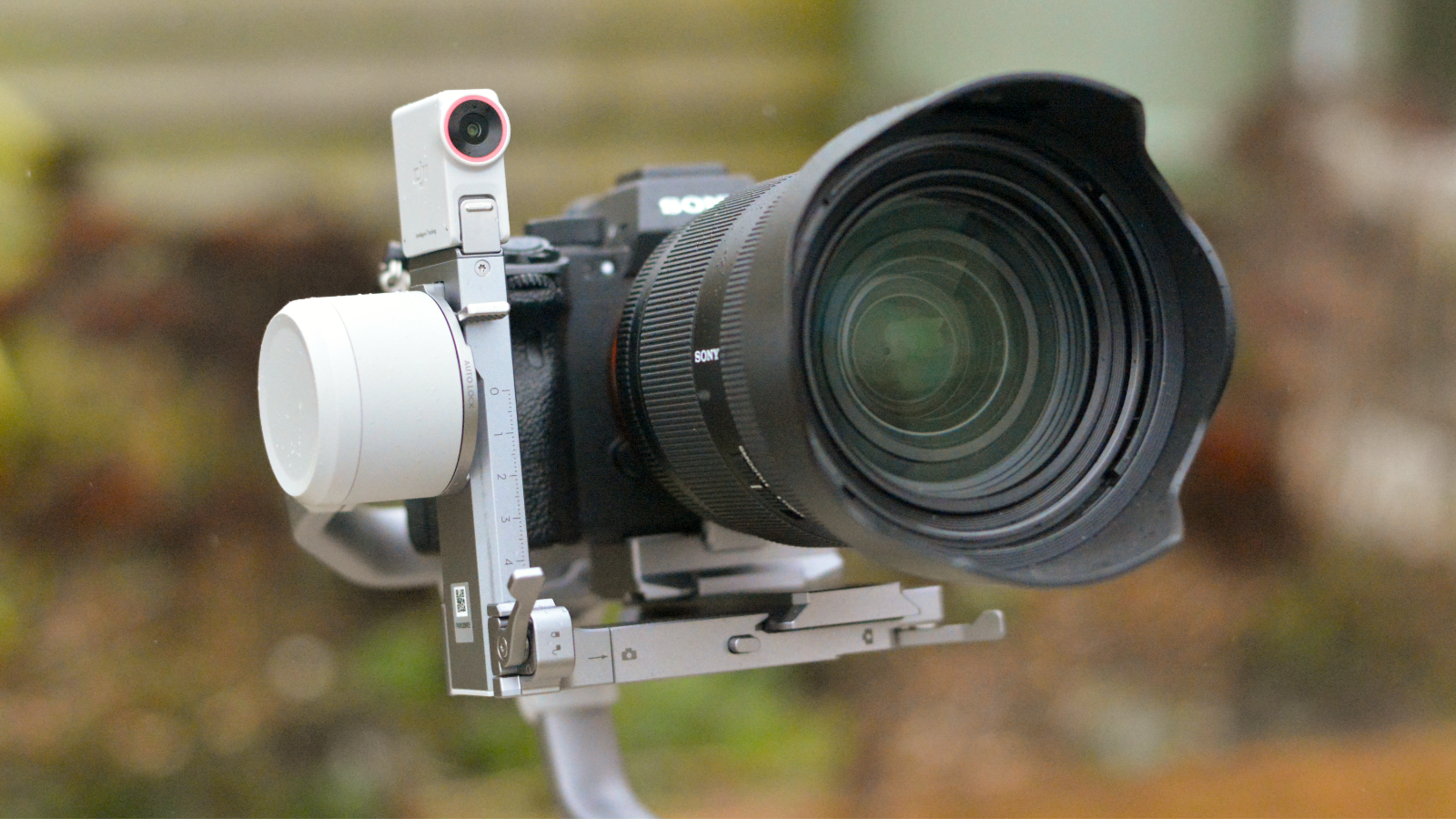
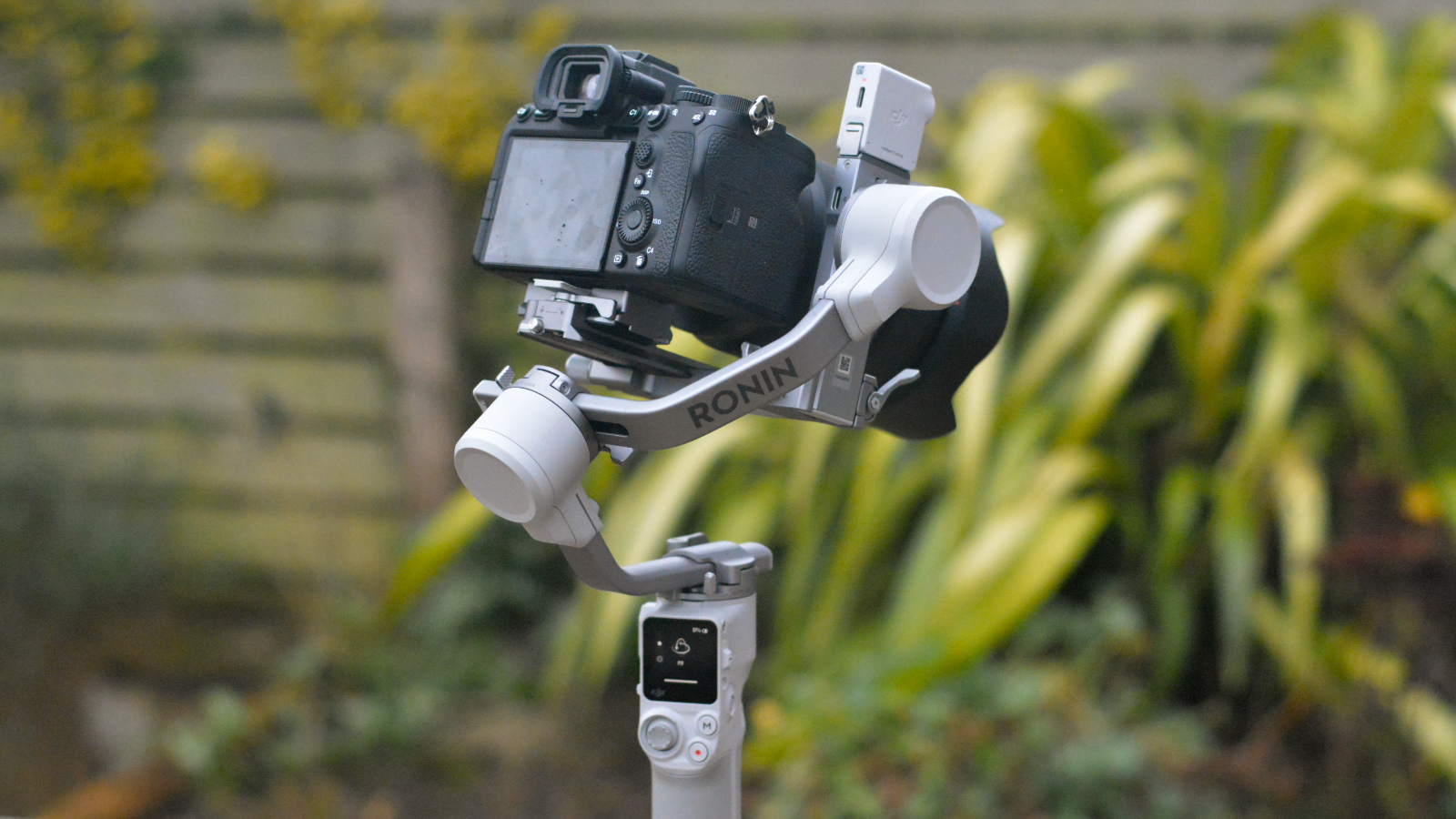
All of these tweaks improve a hands-on experience which was already solid. You get the same 1.4-inch color touchscreen, which is as responsive to swipe inputs here as it was before. There’s also a comfortably positioned trigger and front scroll wheel, which can be used to control one of several functions on a connected camera. (Note that the multi-camera control cable bundled with the RS 4 Mini is a USB-C number. For certain models, including the Sony A7S III I shot with, a different cable is required.)
The RS 4 Mini matches the high production standard of any recent DJI product, with a robustness to the build that suggests it’ll be shooting with you for many years to come. That’s despite weighing just a smidge more than the RS 3 Mini at only 890g. It packs down just as tidily too, measuring 236 × 64 × 316mm in folded form (versus 195 x 98 x 323mm for the RS 3 Mini).
Setup still starts with balancing the axes, which is an unfortunate necessity with any gimbal. Instruction videos in the Ronin app do make this as painless as possible and the upgrade to Teflon interlayers means the RS 4 Mini’s arms slide more smoothly through the brackets. They can still be a bit grippy when trying to find the sweet spot with a heavier camera though.
This only really becomes frustrating when you want to switch from horizontal to vertical shooting, because you’ll need to rebalance the axes each time. Still, that switch has been made simpler with the RS 4 Mini: you no longer need to remove the camera from the mounting plate. Instead, you loosen and press a knob, allowing you to detach and remount the plate vertically with the camera still in place. Clearances are quite tight in this orientation, mind.
As above, the DJI RS 4 Mini can also be used to stabilize smartphones with the optional Mini Phone Holder. This simply slots into place on the mounting plate. Its performance capabilities mean the RS 4 Mini is overkill if you only shoot content on mobile, but the option adds welcome flexibility for those who work across multiple devices.
Other improvements also proved welcome in practise. The built-in battery still isn’t removable, but it is bigger at 3,100mAh. The claimed maximum of 13 hours (up from 10 hours) is based on the gimbal being stationary, which isn’t reflective of real-world usage for most users. In testing, we averaged around half of that, which is still better than the RS 3 Mini. Arguably more important is the fact that DJI has shaved an hour off the recharge time, bringing it down to 1.5 hours. That reduction means you can get back to shooting more quickly.
Despite its Mini moniker, the gimbal’s maximum payload is an enthusiast-friendly 2kg, which means it can handle a full-frame mirrorless camera body attached to a relatively weighty lens. Fully loaded, its shorter handle does offer less ergonomic support than the RS4 or RS4 Pro. In testing, I found the redesigned RS Briefcase Handle a help here: lighter and smaller than the previous version, it mounts to the side of the gimbal and adjusts to different angles, giving your supporting hand something to grip.
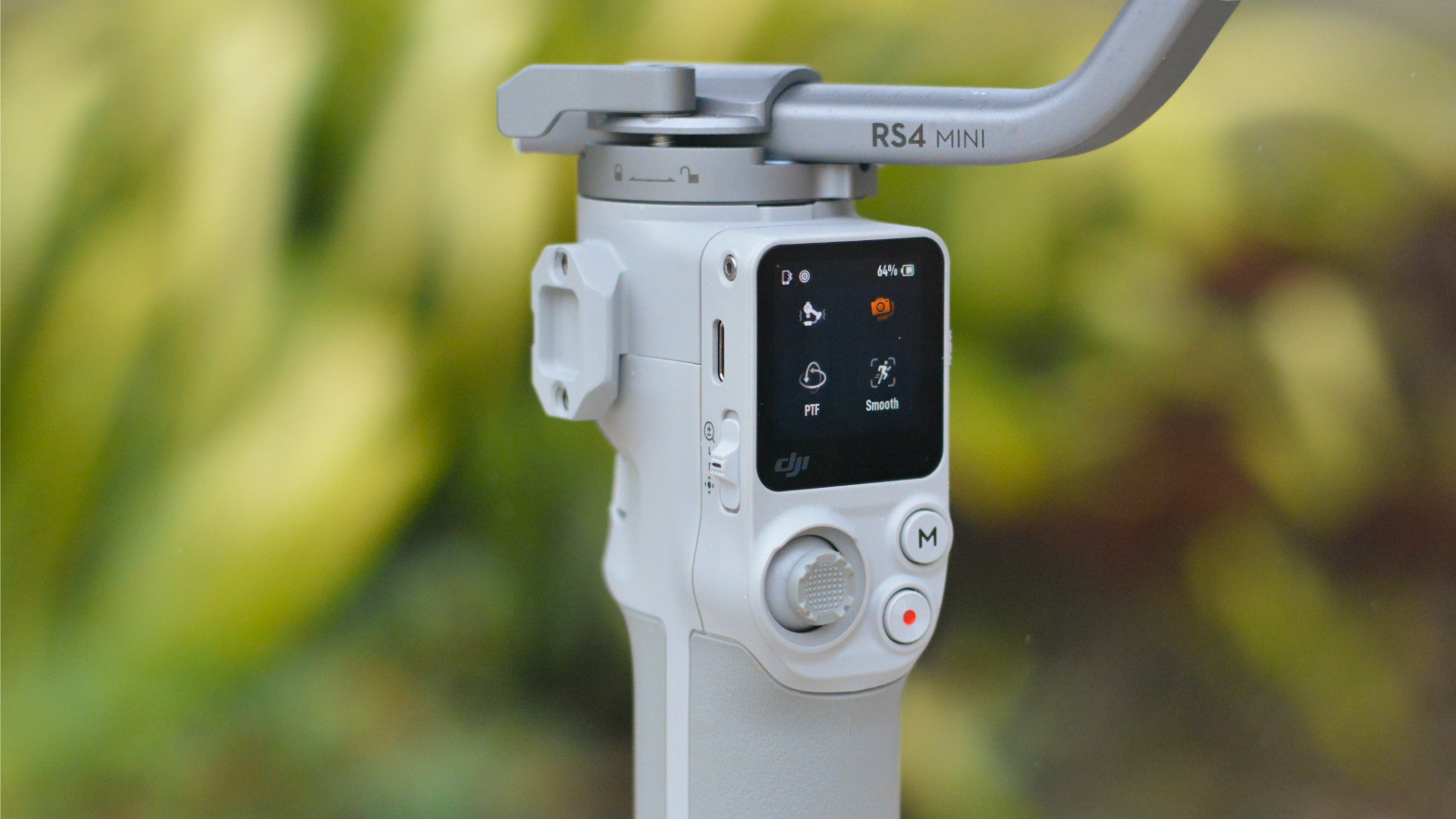
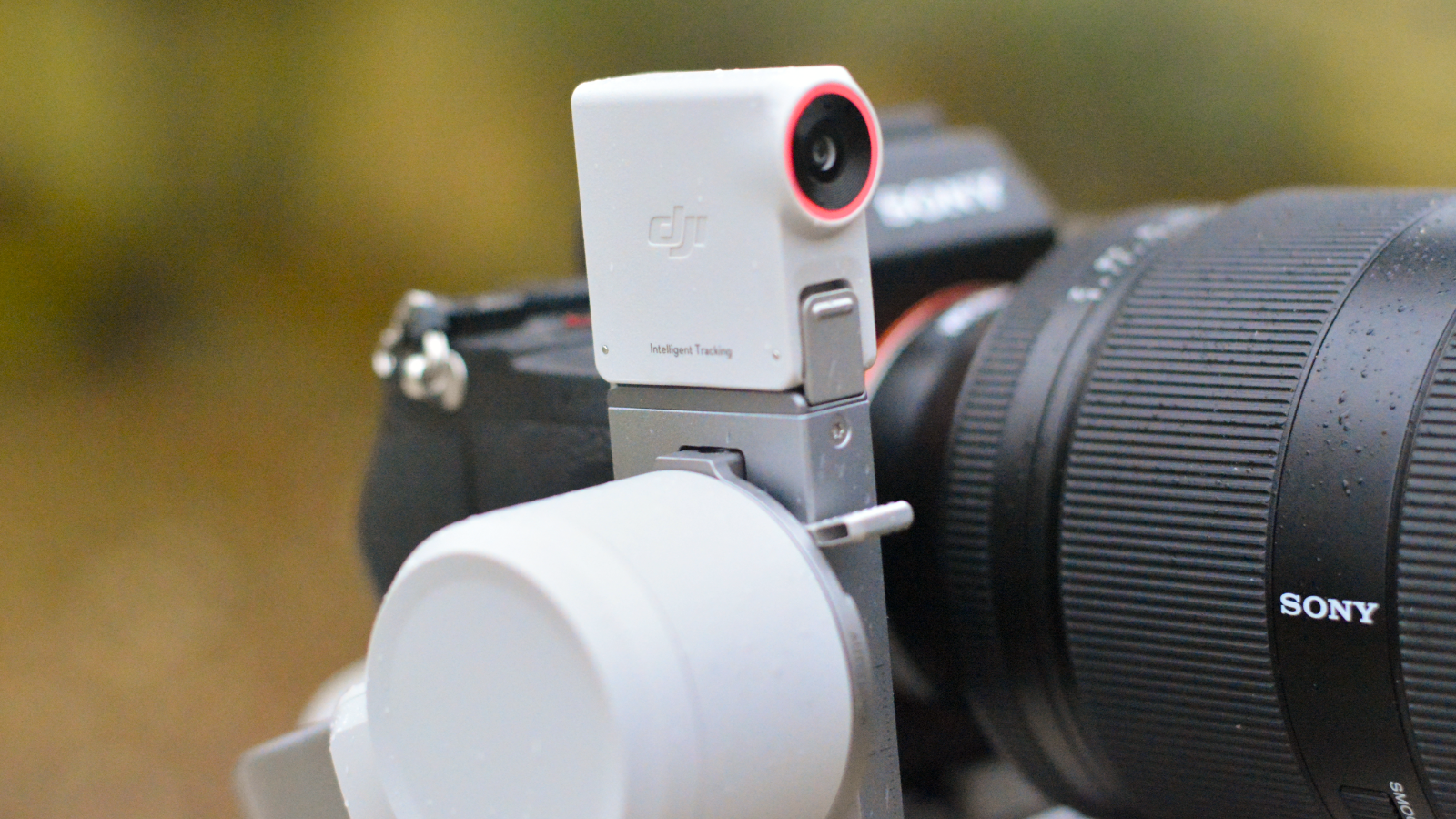
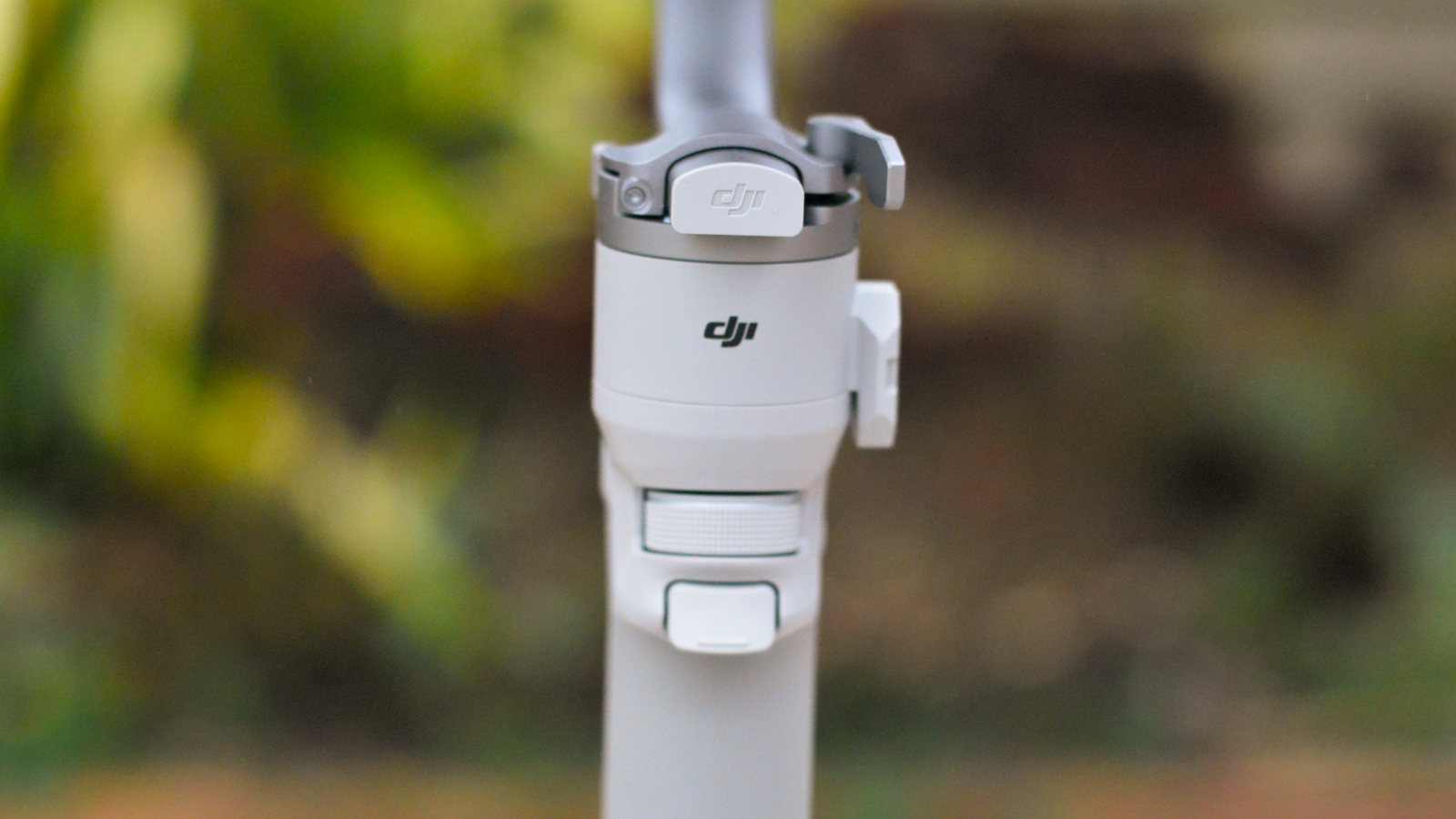
In performance terms, the RS 4 Mini has the chops to compete with pricier gimbals. It should come as no surprise that stabilization is simply superlative, thanks to DJI’s 4th-gen algorithm – the same one used by the RS4 and RS4 Pro. It effortlessly smooths out motion across all three axes, even when you’re walking along with your subject. Movements from carrying a camera by hand are almost entirely eliminated in the resulting footage.
Controlling a gimbal can be a bit of an art form, but the RS 4 Mini smoothes the learning curve. Its joystick makes panning and tilting a fluid experience, while a new ‘Responsive’ follow mode reacts more rapidly to hand movements when circling a subject. Fire up the Ronin app and you’ll also find the option to use your smartphone as a virtual joystick via Bluetooth, plus creative modes for shooting panoramas, timelapses and more. You’ll be hard-pushed to find a more intuitive gimbal.
Nowhere is that more evident than with the RS 4 Mini’s party trick: subject tracking. The key to this is the optional Intelligent Tracking Module, which attaches magnetically to the top of the mounting arm. Fronted by a small camera lens, it uses AI to detect faces and deploys the gimbal’s motors to track them.
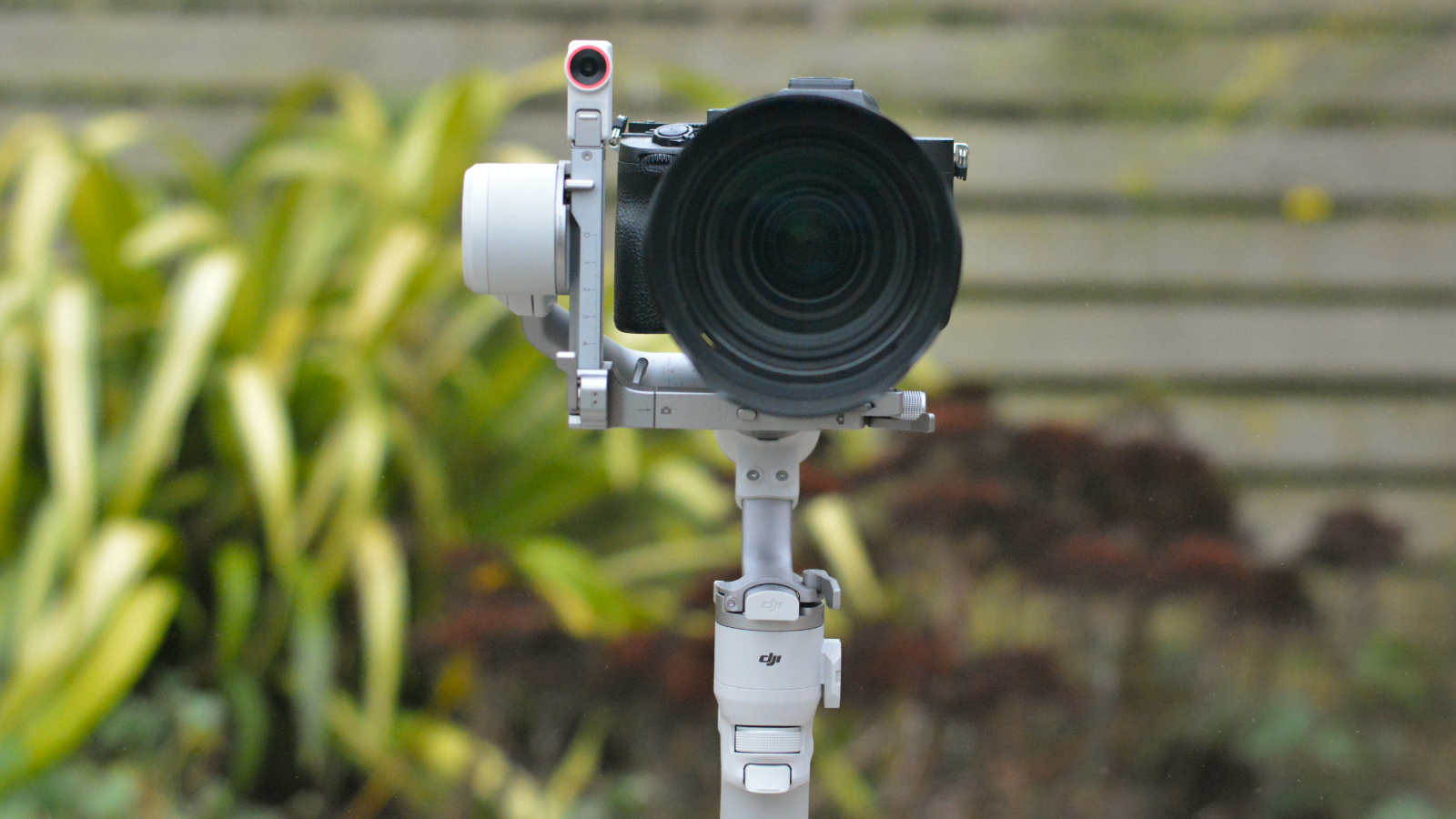
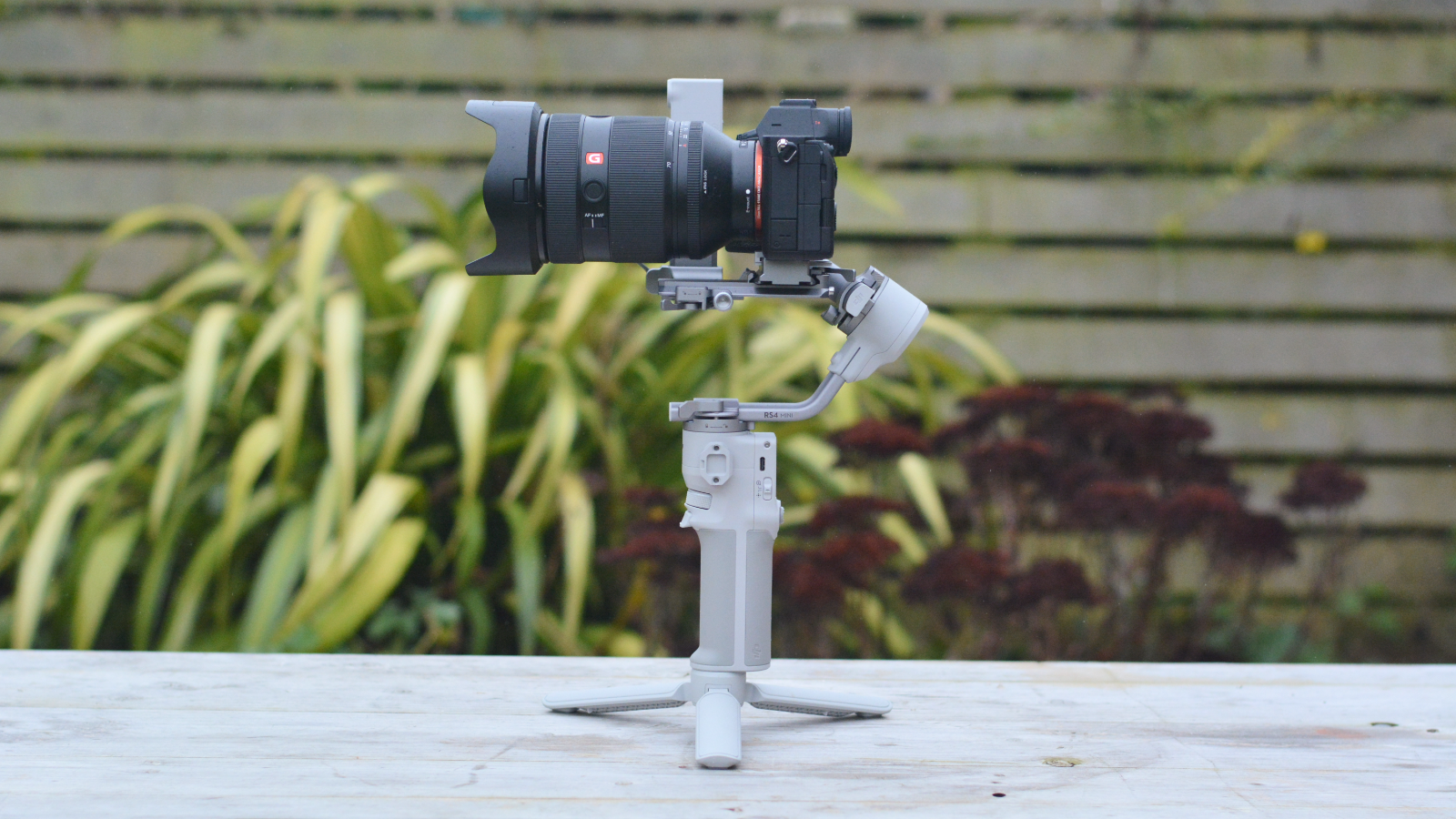
The effectiveness of this tool can’t be overstated. For filmmakers, it allows you to move around a subject without having to manually pan and tilt to keep them centered in the frame. It’s also a boon for content creators working alone. With the RS 4 Mini stood on its tripod base, users can move around the camera and it will follow their face through a full 360-degree horizontal arc.
These dual uses are reflected in the ways you can enable ActiveTrack. The first is with a single press of the trigger (there needs to be a face in the frame for this to work, which it took me a while to figure out). The second is by using gesture controls: stand in front of the RS 4 Mini and you can throw up the relevant hand signal to start or stop tracking, as well as recording. When the mode is active, a ring light around the Module’s lens turns from red to green (this can be disabled if the situation demands subtlety).
This feature is a lot less gimmicky than it might sound. I can see influencers, content creators and would-be presenters using gesture activation to easily control the tracking feature from afar. Not least because the feature proved incredibly reliable in testing, never once missing a signal.
ActiveTrack proved no less consistent, locking on to faces with remarkable accuracy. That makes sense, given that DJI has been perfecting the system on its drones and pocket gimbals for years. Its application here is game-changing because it allows you to use the tracking tech with any camera or smartphone that can sit on the gimbal.
Add up the RS 4 Mini's features and you're looking at a compact gimbal which can keep you automatically framed in stabilized high-res video shot vertically on a full-frame camera. When you consider that it costs the same as the RS 3 Mini did at launch – and not too much more with the Intelligent Tracking Module factored in – that makes the RS 4 Mini a strong contender for the best-value camera gimbal you can buy right now.
DJI RS 4 Mini review: Price and Availability
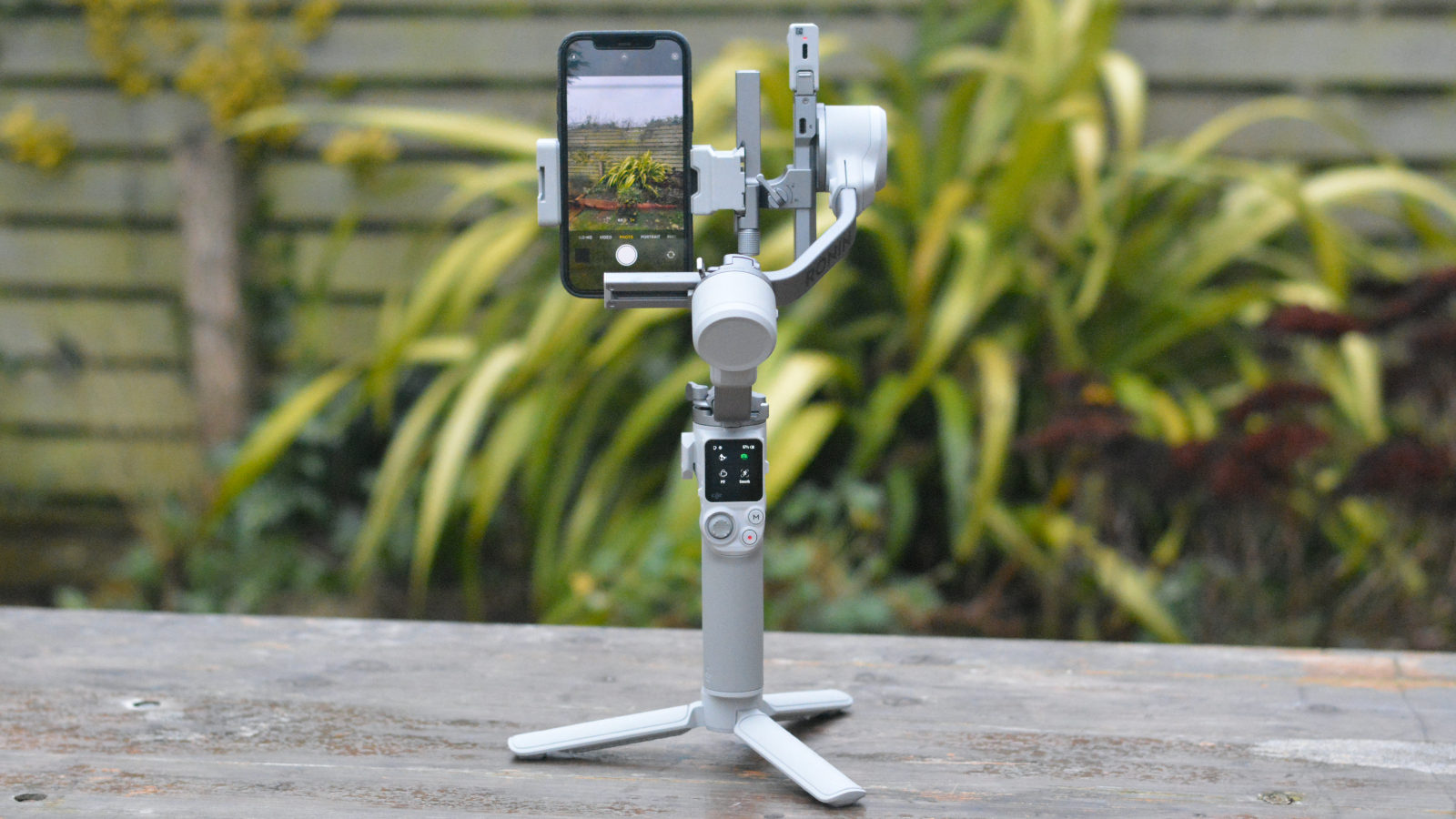
- Released on February 20, 2025
- Standard DJI RS 4 Mini priced at $369 / £339 / AU$539
- Combo kit with Intelligent Tracking Module costs $459 / £419 / AU$659
DJI announced the RS 4 Mini on February 20, 2025. The gimbal is available to order now, priced at $369 / £339 / AU$539. That’s identical to what the RS 3 Mini cost when it went on sale in January 2023, which we think represents good value, given its upgrades and performance. The standard kit includes the following components:
- DJI RS 4 Mini gimbal
- Quick-release mounting plate
- RS 4 Mini tripod base
- Multi-camera control cable (USB-C)
- Charging cable (USB-C)
- Screw kit
The DJI RS 4 Mini is also available as a Combo kit, which additionally includes the RS Intelligent Tracking Module for AI-powered subject tracking, as well as the new RS 4 Mini Briefcase Handle, which serves as an adjustable second grip. The Combo kit costs $459 / £419 / AU$659.
It’s worth noting that the Intelligent Tracking Module is also available to buy separately, meaning users can upgrade their shooting setup down the line. It’s priced at $69 / £59 / AU$99. Given its impressive tracking capabilities, we think most users will want to equip their RS 4 Mini with the optional module.
Also available as a standalone accessory is the DJI RS 4 Mini Phone Holder, which allows users to attach a smartphone to the gimbal’s mount. While the DJI Osmo Mobile 7/7P is a more natural fit for content creators who only shoot with a smartphone, the holder gives owners of the RS 4 Mini the flexibility to use it with both a camera and a mobile device.
DJI RS 4 Mini review: specs
DJI RS 4 Mini review: Also Consider
DJI RS 3 Mini
The previous generation of DJI’s compact camera gimbal is still a capable tool. It doesn't support the Intelligent Tracking Module and lacks some features offered by the RS 4 Mini, such as automatic axis locks and mode switches. That said, it still supports vertical shooting and offers impressive stabilization. What's more, it can now be found at a discounted price.
DJI RS4
A professional-grade gimbal with a 3kg maximum payload, the RS4 is a step up from the RS 4 Mini. It’s relatively lightweight, easy to set up and supports a range of accessories. If you’re serious about video and don’t need the portability of the RS 4 Mini, this could be your gimbal. It is heavier and more expensive, though.
Read our in-depth DJI RS4 review
Should I buy the DJI RS 4 Mini?
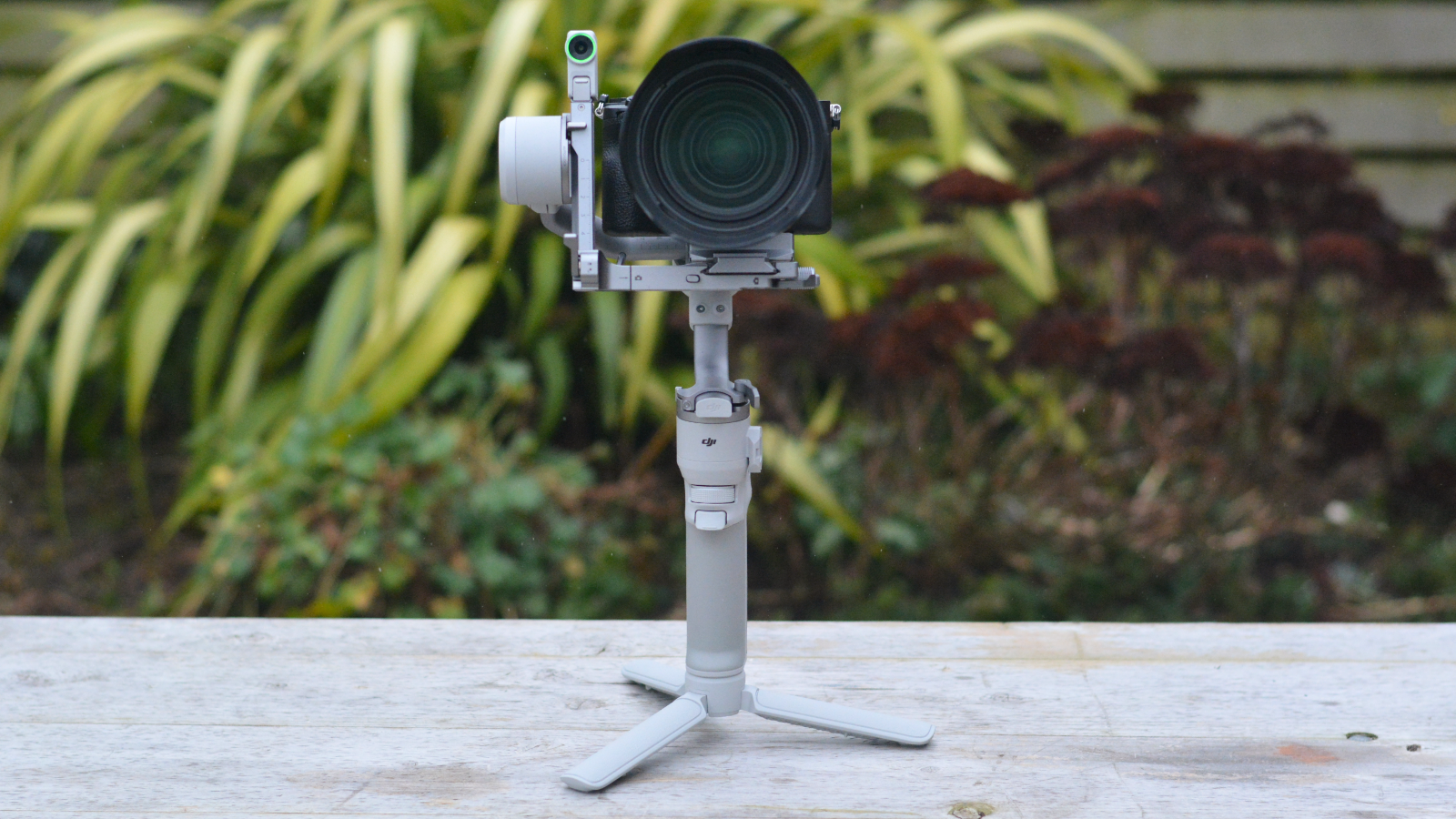
Buy it if...
You want automatic subject tracking
Equipped with an Intelligent Tracking Module, the RS 4 Mini can automatically track faces and keep subjects in the frame – ideal for solo content creators.
You want a portable yet powerful gimbal
Well-built yet lightweight at 890g, the RS 4 Mini packs pro-grade features from DJI’s premium gimbals into a package that’s relatively travel friendly.
You appreciate satisfying design
Automatic axis locks, a fine-tuning knob and a single plate for vertical and horizontal shooting make the DJI RS 4 Mini a tidy bit of kit.
Don't buy it if...
You only shoot with a smartphone
The RS 4 Mini offers the flexibility to shoot with a smartphone or camera, but the Osmo Mobile 7P is better value for mobile-only creators.
You shoot with heavyweight kit
With a maxium payload of 2kg, the RS 4 Mini can handle full-frame cameras, but heavier bodies and lenses need the RS 4 Pro.
You won’t use Intelligent Tracking
While the RS 4 Mini offers plenty of improvements, the main addition is Intelligent Tracking. Without it, the RS 3 Mini might save you money.
How I tested the DJI RS 4 Mini
- I tested the DJI RS 4 Mini gimbal for a fortnight
- I used it with a Sony A7S III, Nikon D7100 and iPhone 12
- I shot with it handheld and stood on its tripod base
DJI supplied me with a sample unit of the RS 4 Mini gimbal for this review, along with the Intelligent Tracking Module, the Mini Briefcase Handle and the Mini Phone Holder.
Over the course of a fortnight, I tested the gimbal and its full complement of accessories. I primarily shot with a Sony A7S III attached to the quick-release plate, paired with an FE 28-70mm F2 GM lens. That combination sat towards the upper end of the RS 4 Mini’s payload capacity, hitting the scales at close to 1.7kg.
To see how the RS 4 Mini performed as a smartphone gimbal, I used it with my iPhone 12 mounted in the Mini Phone Holder. That same phone was paired with the gimbal using a pre-release version of the Ronin app.
And because I had it to hand, I also mounted my Nikon D7100 to the gimbal with a 50mm prime lens, simply to see how well its subject tracking worked with a legacy DSLR model.
I spent several hours shooting handheld with the RS 4 Mini. I attached the optional Mini Briefcase Handle for some of this period, to understand how the grip improved handling with weightier cameras.
I also shot with the RS 4 Mini on its tripod base, primarily to test the effectiveness of its Intelligent Tracking Module for solo content creators. I used gesture controls to control the gimbal in my living room.
I test a lot of cameras and lenses for TechRadar, and I regularly write about DJI. I’ve also tested the DJI RSC 2 in the past, so I’m well-placed to review the RS 4 Mini.
First reviewed February 2025
Comments
Post a Comment